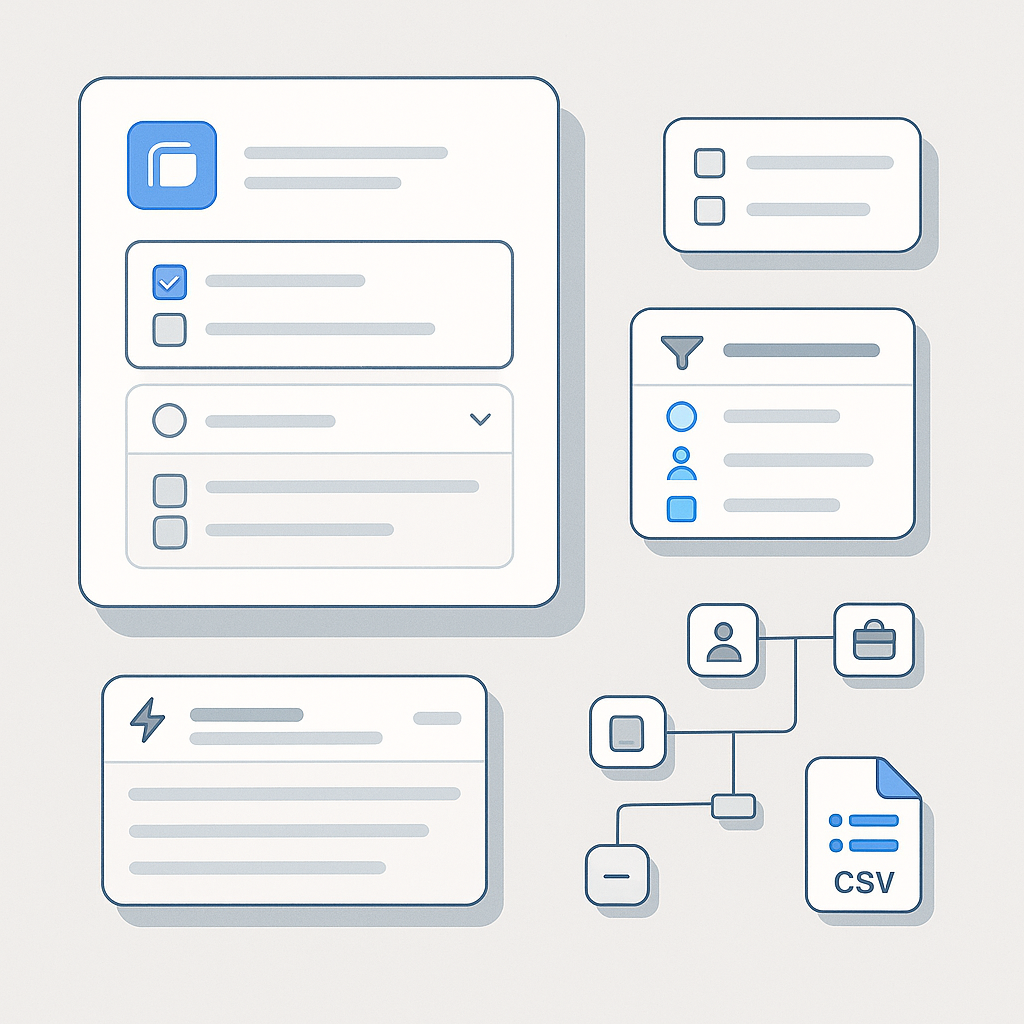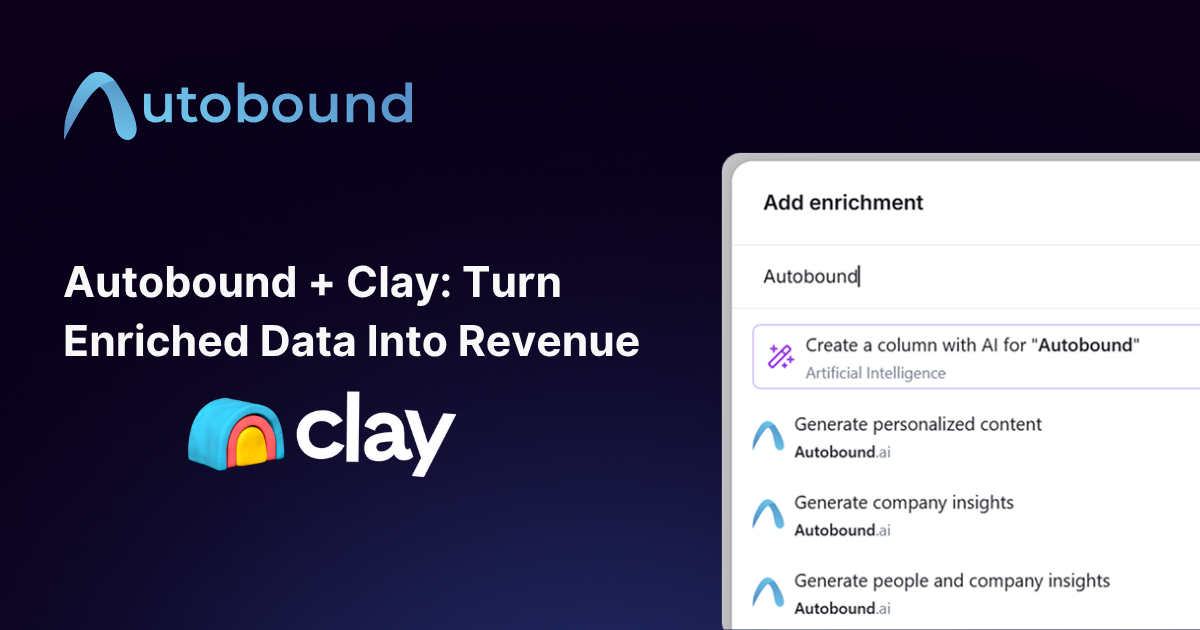Introduction
variables factor in here, from the target company size to the age of the market. But the chief determinant might be deal size, with SaaS Metrics noting that deals in the $2,000 range should close within two weeks while deals over $100,000 might take three to six months to close." This underscores the need to tailor your approach based on deal size and complexity, as different prospects may require different levels of personalization and engagement.
14. Add Value at Every Touchpoint:
Nobody likes to feel like they're being constantly sold to. It's like being followed around by a pushy salesperson who won't take no for an answer. Instead of bombarding your prospects with a barrage of sales pitches, focus on providing value at every touchpoint. Share a relevant blog post, offer a helpful ebook, invite them to an insightful webinar – these small gestures can go a long way in building trust, establishing your expertise, and moving the sales conversation forward in a natural, organic way.
Phase 6: Continuous Improvement
15. Track, Analyze, and Iterate:
Your quest to shorten your SaaS sales cycle is not a one-and-done endeavor; it's an ongoing journey of continuous improvement. Regularly track your sales cycle metrics, analyze what's working (and what's not), and don't be afraid to experiment with new approaches. A/B test different email subject lines, analyze sales rep performance to identify best practices, gather customer feedback to understand their pain points – these are all valuable sources of data that can help you fine-tune your sales process and squeeze every last drop of efficiency out of your sales cycle.
Conquer Your Sales Cycle: Ready to Accelerate Growth?
So there you have it – 15 actionable steps to transform your SaaS sales cycle from a leisurely stroll to a high-speed sprint. By embracing a blended approach to sales, empowering your in-house team, leveraging outsourced expertise, and adopting a data-driven, customer-centric mindset, you can unlock the secret to faster growth, increased revenue, and a sales process that's as efficient as it is effective. Ready to take your SaaS sales to the next level? The finish line awaits!
About Autobound
Autobound's leading AI-powered platform delivers 350+ unique insights for go-to-market teams from financial filings, social media activity, 35 news events, competitor trends, job changes and more. Trusted by 7,000+ companies including TechTarget and validated by 220+ 5-star G2 reviews, we're unlocking hyper-personalization at scale, with native integrations for Salesloft, Outreach, and more. Leverage our developer-friendly API, try our Chrome extension, try our platform free, or contact our team to eliminate guesswork and drive measurable growth →
Built with love in San Francisco, CA
Let's be honest, in the SaaS world, we've all experienced that sinking feeling when a sales cycle seems to stretch on longer than a Lord of the Rings marathon. You're not alone if you've ever felt like your SaaS sales cycle was trapped in a time warp, complete with dial-up internet speeds and carrier pigeons delivering proposals. Missed forecasts, resources stretched thinner than a yoga instructor on a caffeine high, and the ever-present pressure to hit those ambitious growth targets – it's enough to make even the most seasoned sales leader reach for the panic button.
But what if there was a way to inject a shot of espresso into your sales process? A way to transform those sluggish cycles into a high-speed revenue-generating machine? That's where the magic of a blended in-house and outsourced sales team comes in. Think of it as assembling a sales force with the precision of a Swiss watchmaker, combining the strengths of internal experts who live and breathe your product with the agility and specialized skills of external ninjas ready to conquer new markets at a moment's notice.
This dynamic duo can be your secret weapon, allowing you to:
- Ramp up faster: Imagine onboarding a team of sales pros who can hit the ground running, armed with the knowledge and experience to start generating leads from day one.
- Tap into specialized expertise: Need to crack a new vertical or navigate the complexities of a niche market? A blended team gives you access to a deep bench of specialists.
- Scale with ease: Whether you're experiencing a seasonal surge or gearing up for rapid expansion, a blended team provides the flexibility to scale your sales efforts up or down as needed.
- Keep costs in check: Building and maintaining a large, full-time sales team can be expensive. Outsourcing allows you to access top-tier talent without breaking the bank.
Ready to ditch the sales cycle blues and build a sales machine that's as lean as it is mean? Let's dive into the 15 actionable steps that will get you there.
In-House vs. Outsourced: Finding the Right Sales Balance
Before we jump into the nitty-gritty of optimizing your sales cycle, let's take a moment to explore the strengths of both in-house and outsourced sales teams, and why finding the right balance between the two can be a game-changer for your SaaS business.
When to Keep Sales In-House
Picture this: your in-house sales team, a group of passionate individuals who know your product inside and out, who can recite your company's mission statement in their sleep, and who have an uncanny ability to build genuine, long-lasting relationships with customers. They're your brand ambassadors, your product evangelists, your customer whisperers.
When it comes to navigating the complexities of enterprise-level deals that require a deep understanding of your product, a consultative approach, and a commitment to long-term customer success, your in-house team is an invaluable asset. They're also the go-to experts for handling those highly technical products that demand in-depth demos, a nuanced understanding of the technology, and the ability to answer even the most obscure questions about your software.
When to Outsource Your Sales Function
Now, imagine a crack team of outsourced sales professionals, ready to hit the ground running with the speed and agility of a cheetah chasing its prey. They're your secret weapon for rapid scalability, bringing a wealth of specialized skills to the table, whether it's conquering a niche vertical, launching a targeted lead generation campaign, or providing support during peak seasons.
And the best part? This surge of sales firepower comes at a fraction of the cost of building out a full-fledged in-house team, especially in those crucial early stages when you're still figuring things out and every dollar counts. Don't just take our word for it – the numbers speak for themselves. According to Computer Economics research, market leaders significantly ramped up their IT budget spend on outsourcing by a staggering 38% in 2021. This clearly shows that smart businesses are increasingly turning to outsourcing to gain a competitive edge in the market.
The Power of Blending In-House and Outsourced
Here's where the real magic happens: blending the best of both worlds. Imagine combining the deep product knowledge, brand alignment, and customer-centricity of your in-house team with the speed, scalability, and specialized expertise of an outsourced sales force. That's a recipe for sales synergy that's tough to beat.
Think of it like this: your in-house team is like the foundation of your house, providing stability, strength, and a deep understanding of your core values. Your outsourced team is like the walls, roof, and windows, allowing you to expand your reach, adapt to changing market conditions, and create a sales structure that's both robust and flexible.
15 Actionable Steps to Supercharge Your Sales Cycle
Now that we've explored the power of a blended sales team, let's roll up our sleeves and dive into the 15 actionable steps you can take to shorten your SaaS sales cycle and accelerate your path to revenue.
Phase 1: Strategic Alignment
1. Define Your Ideal Customer Profile (ICP):
Before you even think about crafting that killer sales pitch or sending out a single cold email, you need to know exactly who you're targeting. Who are your ideal customers? What are their pain points, their goals, their dreams? What keeps them up at night, and what gets them excited to start their day?
Defining your ICP with laser-like precision is crucial for tailoring your outreach, messaging, and even your entire sales process to resonate with the specific needs and challenges of your target audience. Think of it like this: if you're a fisherman trying to catch tuna, you wouldn't use the same bait and tackle as someone fishing for trout in a freshwater lake. The same principle applies to sales – the more you understand your ideal customer, the better equipped you'll be to attract, engage, and ultimately convert them into loyal customers.
2. Map Your Sales Process & Identify Bottlenecks:
It's time to grab your metaphorical magnifying glass and play detective with your sales process. Map out each stage of your sales cycle, from the moment a lead enters your funnel to the sweet sound of a closed deal. Are there any stages where deals seem to get stuck, like cars in a traffic jam? Are there any unnecessary steps that are adding friction to the process, like trying to run a marathon in flip-flops?
Identifying and addressing these bottlenecks is like clearing the roadblocks on your sales highway, allowing deals to flow through your pipeline smoothly and efficiently. Remember, time is money, and every day you can shave off your average sales cycle translates into faster revenue and increased profitability.
3. Establish Clear KPIs and Benchmarks:
You can't improve what you don't measure. It's like trying to bake a cake without a recipe – you might end up with something edible, but it's unlikely to win any awards. Establish clear, measurable, and ambitious (yet attainable) key performance indicators (KPIs) for each stage of your sales cycle. Think about metrics like MQL to SQL conversion rate, average sales cycle length per deal size, and opportunity win rate.
By tracking these KPIs, you'll gain valuable insights into what's working, what's not, and where you need to focus your optimization efforts. It's like having a GPS for your sales process, guiding you towards your destination and alerting you to any detours or road closures along the way.
Phase 2: In-House Team Enablement
4. Equip Your Team with the Right Sales Tools:
In today's digital age, your sales team needs to be armed with the right tools to succeed, just like a knight needs a trusty sword and shield to conquer the battlefield. Sales enablement platforms, CRM optimization, automation tools – these are the weapons of choice for modern sales warriors.
By providing your team with the technology and resources they need to streamline their workflow, automate repetitive tasks, and access real-time insights, you'll empower them to close deals faster and more efficiently. Think of it like this: would you send a sales rep to a gunfight armed with a slingshot? Of course not! Give your team the tools they need to win.
5. Invest in Sales Training & Development:
Your sales team is your most valuable asset, so it pays to invest in their ongoing development, just like you would invest in maintaining a high-performance sports car. Product knowledge, sales techniques, negotiation skills, objection handling – these are all areas where continuous training can make a world of difference.
Whether it's online courses, workshops, peer-to-peer coaching, or a combination of approaches, make sure your team has access to the training and development opportunities they need to stay sharp, adapt to new challenges, and consistently crush their quotas. Remember, the sales landscape is constantly evolving, and what worked yesterday might not work tomorrow. As Casey Hill, a sales manager for SaaS firm Bonjoro, wisely points out, his firm has experienced "tremendous success" by incorporating personalized videos into deal closes, a testament to the power of staying ahead of the curve with up-to-date tactics.
6. Foster a Data-Driven Sales Culture:
In the age of big data, gut feelings and intuition can only take you so far. It's like trying to navigate a maze blindfolded – you might eventually find your way out, but it's going to take a lot longer and involve a lot more wrong turns. Encourage your team to embrace data as their secret weapon, using it to track performance, identify areas for improvement, make informed decisions, and optimize your sales process for maximum efficiency.
By creating a culture where data is king, you'll empower your team to make smarter decisions, close deals faster, and drive revenue growth. Think of it like this: data is the fuel that powers your sales engine, and the more data you have, the faster and more efficiently your engine will run.
Phase 3: Optimizing with Outsourced Expertise
7. Identify Your Outsourcing Needs & Goals:
Before you dive headfirst into the world of outsourced sales, take a step back and assess your specific needs. Are you looking to boost lead generation, like a gardener trying to grow a prize-winning pumpkin? Do you need help with appointment setting, like a personal assistant who schedules your meetings with military precision? Or perhaps you're looking for specialized expertise in a particular vertical, like a seasoned tour guide who knows all the best-kept secrets of a foreign city?
Clearly defining your outsourcing needs and goals will help you find the right partner and set your outsourced team up for success. It's like building a house – you wouldn't start construction without a blueprint, and you shouldn't outsource your sales without a clear understanding of what you want to achieve.
8. Select the Right Outsourced Sales Partner:
Choosing the right outsourced sales partner is like choosing a dance partner – you want someone who shares your vision, understands your moves, and can keep up with your rhythm. Look for a partner with a proven track record in your industry, a deep understanding of your target market, and a culture that aligns with your own.
Do they value transparency and open communication? Do they have a rigorous quality control process? Do they share your commitment to customer satisfaction? These are all important factors to consider when evaluating potential partners. And a word of caution: the outsourced sales landscape is a crowded dance floor, with new players emerging all the time. As Bandalier points out, the practice of outsourcing sales development is projected to expand at a compound annual growth rate of 8.67% through 2030. With so many options available, it's more important than ever to choose your partner wisely.
9. Establish Clear Communication & Reporting:
Communication is the lifeblood of any successful relationship, but it's especially crucial when you're working with an outsourced team. Establish clear lines of communication from the get-go, and make sure everyone is on the same page when it comes to reporting structures, KPIs, and expectations.
Regular meetings, shared dashboards, project management software – these are all valuable tools for keeping everyone in the loop and ensuring seamless collaboration between your internal and external teams. Think of it like building a bridge – you need strong communication and a shared understanding of the plan to ensure that both sides meet in the middle.
Phase 4: Process & Technology Hacks
10. Optimize Your Sales Funnel for Speed:
Your sales funnel is the engine room of your sales process, so it's essential to keep it well-oiled and running smoothly. Take a critical look at each stage of your funnel and identify opportunities to streamline the process, like a mechanic fine-tuning a race car for maximum performance. Can you qualify leads faster, like a bouncer at a popular nightclub? Can you shorten the demo-to-proposal phase, like a chef who's mastered the art of speedy service without sacrificing quality?
Even small tweaks can add up to significant time savings over the long haul. One often-overlooked aspect is your pricing strategy. As Mosaic points out, "Your SaaS pricing strategy sets the foundation for your sales cycle... If you offer a product-led freemium product like Dropbox, you'll have a shorter sales cycle." This highlights the impact of your pricing model on sales cycle length and opens up interesting discussions about freemium models and their potential to accelerate sales.
11. Leverage Marketing Automation to Drive Qualified Leads:
Marketing automation is like having a tireless assistant working behind the scenes to nurture your leads and deliver them to your sales team "warmer" and ready to engage. Targeted content marketing, lead scoring, automated email workflows – these are just a few of the ways marketing automation can help you shorten your sales cycle by ensuring that your sales team is focused on the hottest prospects, the ones who are most likely to convert into paying customers.
12. Embrace Sales Engagement Platforms (SEPs):
Sales engagement platforms (SEPs) are the Swiss Army knives of the sales world, offering a suite of tools to automate outreach, track engagement, and boost sales rep productivity. From automating email sequences and follow-ups to providing real-time insights into prospect behavior, SEPs can help your team work smarter, not harder, and close deals faster.
Phase 5: Personalization & Buyer Engagement
13. Personalize Your Outreach Beyond the Name and Company:
In today's inbox-cluttered world, generic, one-size-fits-all outreach is about as effective as shouting into a void. To truly capture your prospects' attention and stand out from the crowd, you need to personalize your outreach beyond simply addressing them by name. Mention a recent company announcement, congratulate them on a work anniversary, reference a shared interest – these small touches can make a big difference in showing your prospects that you've done your homework and that you're genuinely interested in their needs.
Remember, personalization isn't just about being polite; it's about being relevant. As PropellerCRM highlights, "Many




